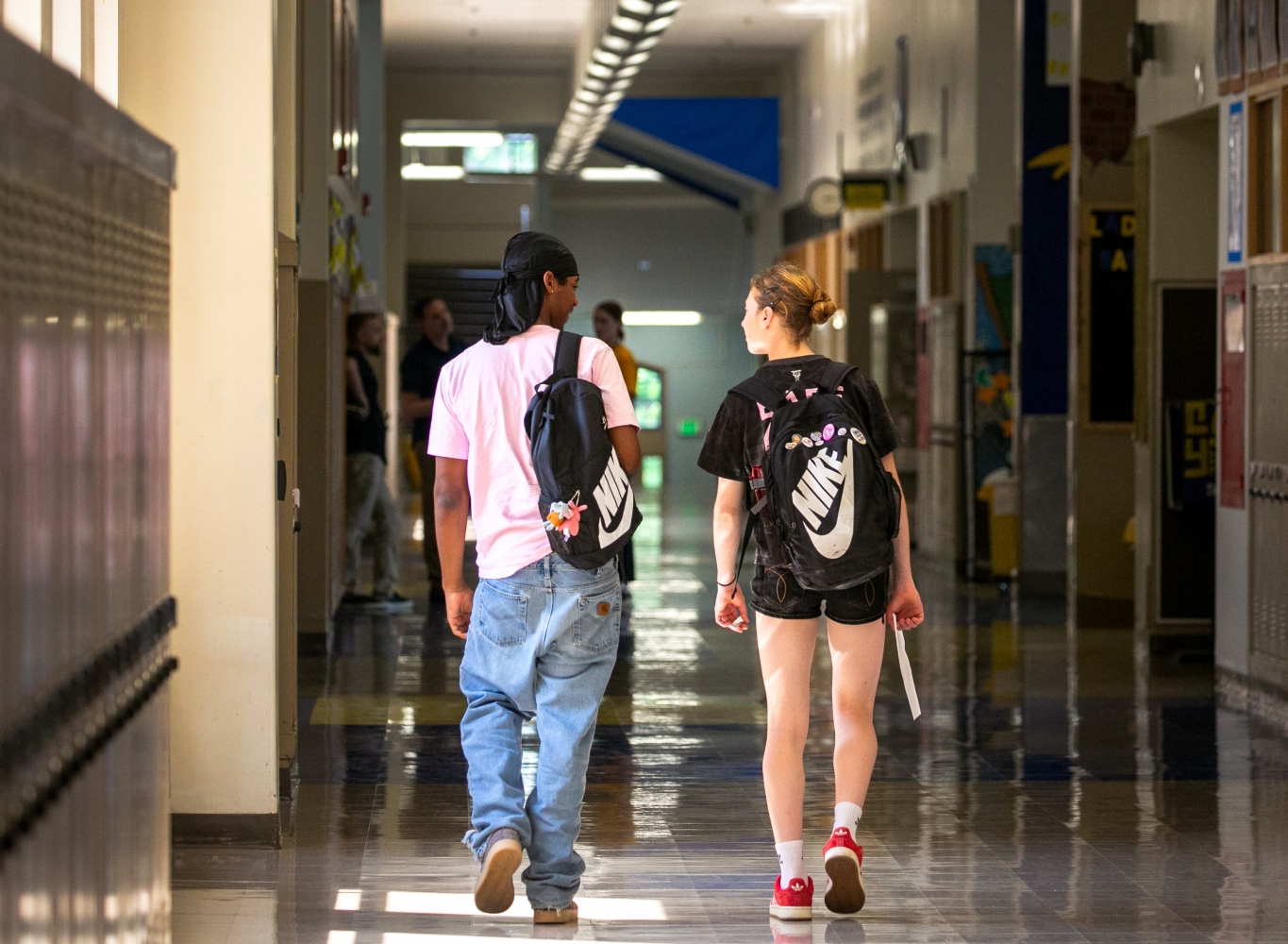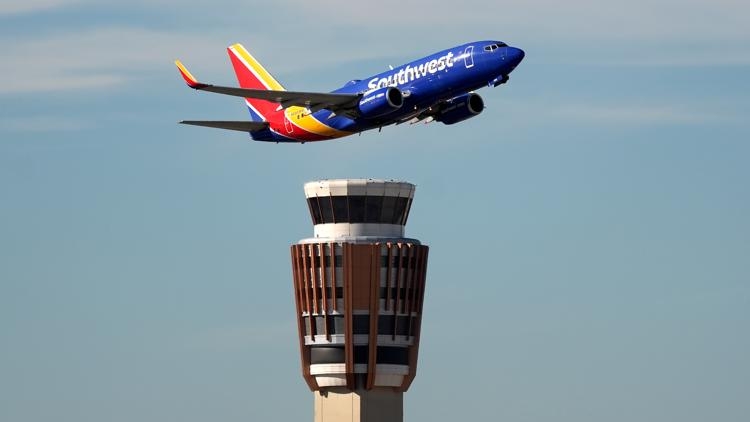

Published on: 11/13/2025
This news was posted by Oregon Today News
Description
OPB followed 25 students from first grade through high school as part of the Class of 2025 project to track the state's progress toward 100% high school graduation starting in 2025.
The project’s final documentary is now available on YouTube, and will air on OPB-TV on Thursday, Nov. 13 at 9 p.m. You can also attend a free screening and discussion at Mt. Hood Community College on Sunday, Nov. 16 at 3 p.m. Register here.
For the better part of a decade — from 2012 through 2019 — Oregon’s public school enrollment had been increasing.
A December 2022 report from the Oregon Department of Education shows small declines in 2010 and 2011, followed by steady increases in enrollment every year until 2020. Then in spring 2020, COVID-19 shuttered schools in Oregon and across the country, forcing students to attend school on laptops.
Oregon schools saw a sharp, steep decline in 2020-2021: 21,744 fewer students. The next year, another drop of almost 8,000 students.
One of those students who left was Dale, a part of OPB’s Class of 2025 project. Dale lives with his grandmother, Carolyn Smith, in Lincoln City, Ore.
Around seventh grade, and around the time when COVID-19 prompted Oregon to transition to remote learning, Dale was reluctantly starting a new school.
“I just never really wanted to be there,” he said.
“I’d rather learn life skills, trades, and do other important stuff that would get me somewhere in life,” Dale said.
Dale left school. Now, he works, doing a little bit of everything — from working on septic tanks to painting and maintenance work around Lincoln City.

“It wasn’t just Dale,” Smith said. “There were a lot of kids that were affected by it. And I know there were a lot of kids that didn’t go back.”
She’s right. Public school enrollment in Oregon dropped by almost 22,000 students after COVID-19 and continues to decline. While declining birth rates in the state were already affecting school enrollment trends, the sharp drop in students raises questions about where once-enrolled students have gone, especially without statewide enrollment tracking for students in other settings, like homeschool or private school.
A recent Brookings report found 12% of Oregon school-aged children “unaccounted for.” That means, like Dale, they were living in the state, but they didn’t show up on public or private enrollment rolls. Most of the states with the largest numbers of such children are in the West, but Oregon had the highest percentage.
Sofoklis Goulas is an associate research scholar at Yale University and one of the authors of the Brookings report.
“We do not see the increase in the share of school-aged children not attending public schools to be fully explained by a corresponding bump in private school enrollment,” Goulas said.
“It doesn’t seem that private schools are a key driver of what we see happening in public schools.”
For public school leaders, the consequences of declining enrollment are real, and something districts across the country are dealing with. Having fewer students can result in less funding to affected districts, which in turn can lead districts to close schools — both of which can make it harder to serve the students still enrolled.
“Unaccounted for”
When it comes to public school enrollment data, there are some things we know for sure — and some we don’t.
The Brookings authors used both census and enrollment data for the 2021-22 school year to get their findings, analyzing how the number of young people reported on the census differed from school enrollment data.
The analysis isn’t perfect. Oregon tallies enrollment by a count of students taken every October 1, but the actual number of students fluctuates throughout the school year.
Getting consistent private school enrollment data is even harder. Goulas and his colleagues used the Private School Survey to document a rise in the number of families choosing private schools. The National Center on Education Statistics conducts the voluntary survey once every two years.
Another data point that may explain some of Oregon’s declining public school enrollment is the rise of homeschooling. According to ODE, the number of families homeschooling increased by 72% “in the first two years of the pandemic.”
In Oregon, families who choose to homeschool their children report that to their local education service district. But Oregon does not collect data on students in private schools or homeschooling from the state’s 19 ESDs.
Ethan Sharygin is the director of the Population Research Center at Portland State University. Sharygin and his team create population estimates and forecasts for Oregon cities, as well as individual school districts.
“The picture on what’s going on at homeschool is pretty murky, and the same thing goes for private,” Sharygin said. For example, private schools in Oregon may not show up consistently in the NCES private school survey.
Also unclear, Shayrgin said, is how many families left Oregon after 2020.
“Are they [kids] really missing from schools, or did they out-migrate? Did the family leave?” Sharygin said.
“The outmigration is really hard to observe, especially since 2020, it was so turbulent — a lot of the data we rely on to tell us when folks have left were interrupted.”
That includes IRS data and driver’s license address changes, Sharygin said.

Brookings researchers used several different national datasets to create their analysis. One thing Goulas noticed is a possible connection between schools classified as “low performing” and higher enrollment declines.
“The enrollment declines that we are observing have some characteristics in the sense that they are associated with family satisfaction and the school performance,” Goulas said, citing other reports he’s authored for the Fordham Institute and The Hamilton Project.
The idea that some Oregon students are “unaccounted for” is something the Oregon Department of Education acknowledged in its 2022 enrollment report.
“Although some students may have left Oregon, we estimate that there are more than 20,000 students currently residing in Oregon who left public K-12 enrollment for other educational settings, or were pushed out of education, in the last two years,” ODE said in its 2022 report.
But to some extent, Sharygin said a decline was expected.
An “anticipated” decline, an unknown future for data collection
Oregon’s birth rate has been declining for years, a trend that school districts — and even universities — have been paying close attention to. But Sharygin said COVID-19 made things worse.
“It compounded the decline,” Sharygin said. “There would still be a decline, but the enrollment would be quite a bit higher.”
At the national level, Goulas wants to continue studying enrollment declines. But he is concerned about the future of the National Center for Education Statistics, which collects the data that researchers, journalists, and experts across the country use to report on these issues. NCES staff were part of the Trump administration’s cuts to the Department of Education.

In Portland, Sharygin says some kind of data-sharing agreement between states could help fill that gap and lead to more information about how many students left Oregon and whether they returned to school.
But locally, public school enrollment changes are something the state typically leaves to Oregon’s 197 school districts.
“Districts would have the best information on how their enrollment has changed and why,” said ODE in response to OPB’s questions about declining enrollment.
Oregon’s largest school district, Portland Public Schools, seems to be trying a new way to get that information. The district recently shared a survey to find out why families are leaving.
PPS is one district Sharygin’s team has followed closely. It’s still hard to tell how many students have left Oregon altogether, but Sharygin said a number of Portland students have been attending private school since kindergarten. He said those students may show up at PPS when they’re older.
“The decline in the public [school enrollment in PPS] really does seem to be more driven by an increase in the number of students who are kind of in this ‘disappeared’ category that Brookings was talking about,” Sharygin said.
“We think a lot of those students are probably going to show up again at high school.”
News Source : https://www.opb.org/article/2025/11/13/oregon-school-education-enrollment-attendance-students-data/
Other Related News
11/13/2025
Mediterranean oak borer found in trees in the Willamette Valley A second threat to some ha...
11/13/2025
Geomagnetic storming made northern lights visible around the United States again Nov 12 Ma...
11/13/2025
A crash in unincorporated Multnomah County killed a 68-year-old bicyclist on Tuesday offic...
11/13/2025
The 4A Oregon high school football playoffs continue this week and The OregonianOregonLive...
11/13/2025








